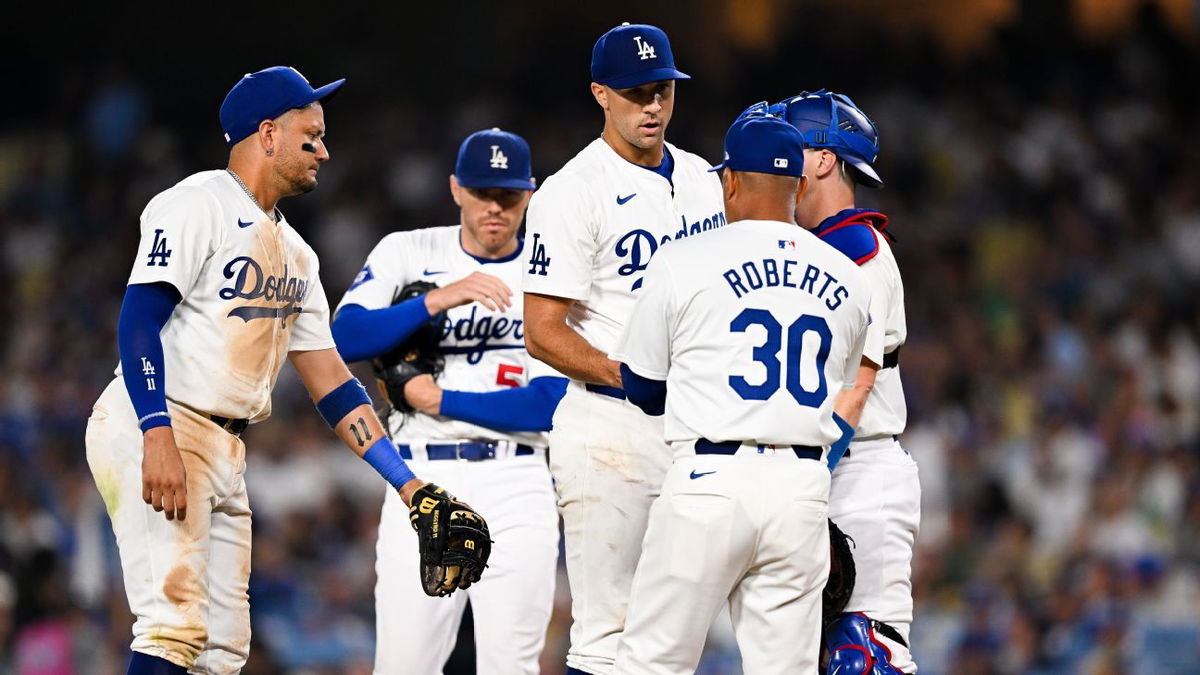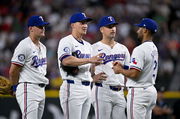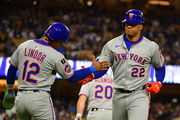

Deep into April 2025, the rhythm of the new baseball season felt familiar. Teams were settling in, divisions were taking early shape, and fans were starting to size things up. Standings provided the first true sense of who was hot and who was not. But then came a set of statistical projections that landed like a foul ball into the stands, causing a firestorm across baseball social media.
Watch What’s Trending Now!
It all began when the @MLBONFOX account tweeted out Baseball Reference’s current World Series odds. The tweet in question only presented the numbers, asking fans, “What do you think of these odds? @baseball_ref”. The graphic showed the Chicago Cubs leading the pack with a surprising 15.9% chance. Right behind them? The Detroit Tigers are at 15%. On the other end, the reigning World Series champion Los Angeles Dodgers were way down in 9th place with just a 5.3% probability. Other competitors, such as the Phillies (0.6 percent) and Guardians (0.3 percent), had almost nonexistent odds.
Baseball Reference’s current odds to win the 2025 World Series, based on their Simple Rating System 👀
What do you think of these odds? @baseball_ref pic.twitter.com/vXG7h2FvDI
— FOX Sports: MLB (@MLBONFOX) April 29, 2025
ADVERTISEMENT
Well, now, how does Baseball Reference actually come up with these figures? The use of something called the Simple Rating System, or SRS. It examines a team’s run differential — how many runs it scores versus allows—and adjusts for schedule strength. For these playoff odds, they run thousands of simulations daily. Importantly, they project each team’s strength based on performance over the last 100 regular-season games, mixing in results from the previous season early on. They also add a regression factor, pulling extreme results closer to the average over time.
But that “last 100 games” part is key to the chaos here. Using stats from the 2024 season played a considerable factor in the odds for late April 2025. So a loaded team like the Dodgers, who were 20-10, got surprisingly low odds (5.3%). Maybe their end to 2024 wasn’t dominant by SRS standards, or their early 2025 run differential wasn’t huge. On the other hand, the Cubs (15.9%) and Tigers (15%) likely had strong run differentials recently and potentially finished 2024 strong over that 100-game window. Giving teams like the Phillies (0.6%) and Guardians (0.3%) almost no chance despite decent records also raised serious red flags for fans.
ADVERTISEMENT
Fans and experts slam Dodgers’ low World Series odds
This system, relying heavily on past data and run margins, seemed completely out of touch with present reality for many fans and analysts.
Veteran MLB insider Jon Heyman didn’t hold back, reacting sharply to the Fox Sports tweet. “Ridiculous,” Heyman declared online. “I’ll take the Dodgers at 19-1, the Phillies at 166-1 and the Red Sox at 200-1 (based on these silly percentages). Total waste of time…” Heyman observed the massive gap between these odds and both expert evaluation and betting markets. His immediate focus on betting value highlighted how far BR’s numbers strayed from reality, especially for the powerhouse Dodgers.
ADVERTISEMENT
Many fans agreed with Heyman, with some promptly providing an alternative source for odds. One typical comment read: “Yeah… Vegas isn’t as dumb as Baseball reference when it comes to odds…” This captures the heart of the fan experience: Vegas odds involve real money and are seen as a more realistic reflection of chances. Seeing the Dodgers as heavy Vegas favorites (around 29% implied probability) versus BR’s 5.3% felt jarring. Likewise, the Cubs’ 15.9% on BR looked wild compared to their ~5% Vegas probability.
Top Stories
Blue Jays Warned of Dire Fallout as Scott Boras Forced Into Desperate Bregman Tactics Amid Red Sox Dilemma

Hal Steinbrenner’s Yankees Ownership Beyond Repair as Mets Hellbent on Cody Bellinger: NY Insider

Did Rangers’ Corey Seager & Marcus Semien Have Beef Between Them? Texas Fans Feel Otherwise

Juan Soto’s Need For Control Uncovered After Denying Mets Locker Room Beef With Francisco Lindor

Blue Jays Pushed Toward Tough Bo Bichette Call as World Series Star’s Toronto Return Turns Uncertain

The near-zero odds for teams playing decent baseball also came under heavy criticism and disbelief. Fans of teams like the Cleveland Guardians expressed this frustration vividly: “I’d bet my life and my kids that Cleveland has better than a 0.3% chance… this is silly.” Fans questioned how the Cleveland Guardians, who held a respectable 16-13 record around April 30th, could possess such small World Series odds.
On the contrary, the teams ranked surprisingly high by the model became targets of mockery. “lol the cubs at 1 is absolutely hilarious,” one user posted. “They have as much of a chance as the Rockies.” While the Cubs had started well (18-12 record ), they were not generally considered in the same tier as the Dodgers by betting markets (around +2000, implying ~4.8% odds ) or most analysts. Their high BR might of been a product of their excellent run differential (+48 scoring 181 and allowing only 133).
ADVERTISEMENT
In the end, the incident fueled broader skepticism about Baseball Reference’s predictive capabilities. “Baseball reference is good for stats but they’re projections are always so bad lol”. This reflects past experiences where early-season odds seemed volatile or inaccurate, often because users don’t fully grasp the “last 100 games” rule or expect the model to perfectly predict the unpredictable playoffs.
So the question remains: How much stock should fans put in projections heavily weighted by last season’s results?
ADVERTISEMENT
ADVERTISEMENT
ADVERTISEMENT
ADVERTISEMENT

